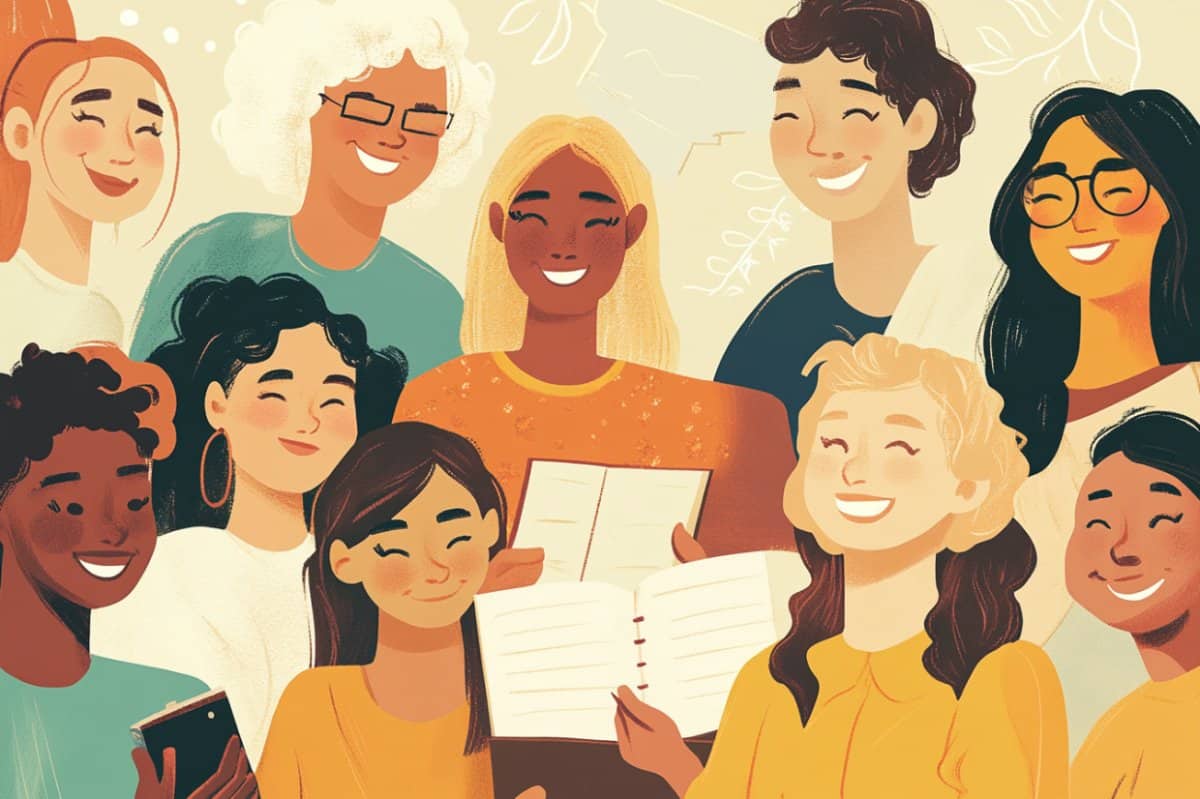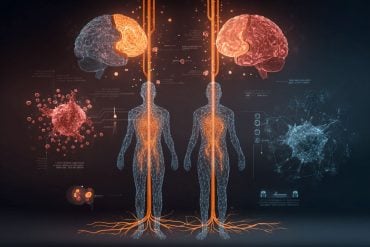Summary: A new study has shown that just seven days of small, daily acts of kindness and gratitude can significantly improve emotional wellbeing. In the web-based Big Joy Project, nearly 17,600 participants from around the world performed micro-acts like sharing joyful moments and listing things they’re grateful for.
The results revealed higher positive emotions, lower stress, and better sleep, especially among younger, Black, Hispanic, and socially disadvantaged individuals. This is the first large-scale study to demonstrate that a short, low-effort intervention can provide meaningful mental and physical health benefits.
Key Facts:
- Short & Effective: Just a few minutes per day for 7 days improved wellbeing, sleep, and stress levels.
- Equity in Impact: Younger, Black, Hispanic, and disadvantaged groups saw the greatest benefits.
- Scalable Model: Minimal time commitment means greater accessibility for broader populations.
Source: UCSF
Researchers, led by UC San Francisco, tested the effectiveness of a weeklong, web-based wellbeing intervention, known as the Big Joy Project.
This consisted of daily micro-acts, which included asking someone to share a fun, inspiring, or proud moment, making a gratitude list, and performing a kind act to brighten someone’s day.
Approximately 17,600 people from around the world participated: most were from the United States, Canada and Great Britain (71%), female (84%), white (74%), with at least some college education (94%).
What They Discovered:
- After the seven-day intervention, participants reported higher levels of wellbeing and positive emotions, and a stronger belief that one’s own behavior can promote happiness. They also reported decreased stress, and improved health and sleep quality.
- Younger, Black and Hispanic, and socially disadvantaged participants benefited the most.
Why It Matters:
- Improvements in wellbeing are associated with a lower risk of future mental illness and better physical health. “People with higher wellbeing are less likely to develop chronic conditions, like cardiovascular diseases, and have reduced mortality in both healthy and unhealthy populations,” said senior author Elissa Epel, PhD.
- Web-based wellbeing interventions that last several weeks and take 3 to 4 hours a week to complete have shown favorable results. But this is the first time that a short intervention has shown such strong benefits, and it could work for more people.
“Many people lack the time, motivation, and resources to commit to these lengthier programs, and they may be more likely to drop out,” said first author Darwin Guevarra, PhD, who is also affiliated with Miami University.
“We were excited to get positive results in a program that required just a few minutes each day for a week.”
Funding and Disclosures: Smith and Callahan are from the nonprofit that partially funded the Big Joy Project.
About this happiness and psychology research news
Author: Suzanne Leigh
Source: UCSF
Contact: Suzanne Leigh – UCSF
Image: The image is credited to Neuroscience News
Original Research: Open access.
“Scaling a Brief Digital Well-Being Intervention (the Big Joy Project) and Sociodemographic Moderators: Single-Group Pre-Post Study” by Elissa Epel et al. Journal of Medical Internet Research
Abstract
Scaling a Brief Digital Well-Being Intervention (the Big Joy Project) and Sociodemographic Moderators: Single-Group Pre-Post Study
Background:
Emotional well-being interventions lead to better mental and physical health. However, most of these interventions have been tested on relatively homogeneous samples, with few interventions large enough to examine whether key sociodemographic factors impact outcomes.
In addition, barriers to engagement include access and high participant burden. We developed a brief web-based intervention to address these barriers and tested the effects across sociodemographic groups.
Objective:
The study aims to examine the effectiveness of a brief, low-burden digital well-being intervention in improving emotional well-being and health-related outcomes across a diverse global sample. It investigates how key sociodemographic factors, such as age, sex, race and ethnicity, education, financial strain, and subjective social status, moderate intervention effects. The goal is to identify which groups benefit most, informing the scalability and public health potential of digital well-being interventions.
Methods:
We conducted a single-group pre-post study spanning from 2022 to 2024 using a web-based, multicomponent, week-long well-being intervention requiring 5 to 10 minutes of daily activity (the Big Joy Project).
Using a global convenience sample recruited via open web-based enrollment, we assessed pre-post changes in emotional well-being, positive emotions, happiness agency, perceived stress, self-reported health, and sleep quality.
At baseline, participants also reported sociodemographic characteristics. We used mixed-effects linear models to examine pre-post changes in the outcomes and sociodemographic moderators.
Results:
The sample (N=17,598) consisted of individuals from 169 countries and territories, with broad representation across sociodemographic groups; however, the sample was predominantly White, female, and had at least a high school or college education.
Following the intervention, participants showed significant within-subjects effect size increases in emotional well-being (dz=0.48; P<.001), positive emotions (dz=0.45; P<.001), and happiness agency (dz=0.44; P<.001).
Furthermore, participants showed a decrease in perceived stress (dz=–0.35; P<.001) and an increase in self-reported health (dz=0.07; P<.001) and sleep quality (dz=0.15; P<.001). There was a clear dose-response pattern across outcomes: participants who engaged in more daily practices showed greater improvements.
There was a strong pattern of social disadvantage moderating these effects, with groups experiencing greater social disadvantage showing larger benefits across most outcomes. For example, those with lower education, greater financial strain, or lower subjective social status and those identifying as individuals from racial or ethnic minority groups (Black or Hispanic) all showed larger improvements across well-being outcomes.
Furthermore, younger people had greater increases in emotional well-being and greater decreases in perceived stress compared to older people.
Conclusions:
A brief, low-intensity intervention showed meaningful improvements in well-being and stress, comparable to those seen in longer, more intensive digital well-being interventions. Sociodemographic groups that are at higher risk of poor mental health benefited more from the intervention, highlighting its potential for scalable public health impact. Testing this intervention with a randomized controlled trial design will be important.








